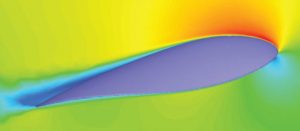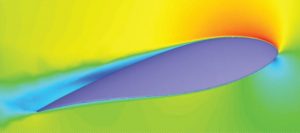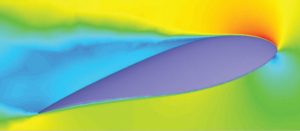Hydrofoil
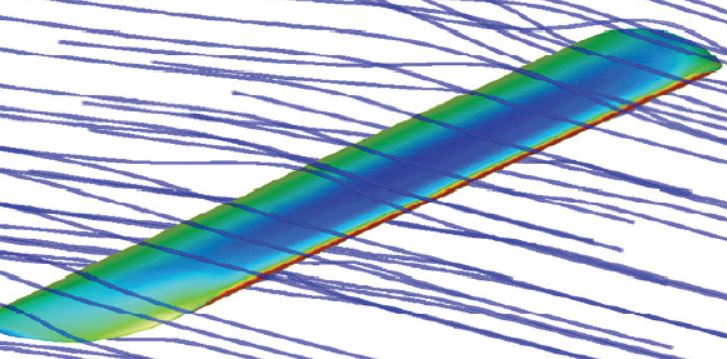
A flow simulation was used to determine the lift coefficient of the leading edge of a hydrofoil at different angles of attack
(lift polars) at a given Reynolds number was determined (see diagram).
(lift polars) at a given Reynolds number was determined (see diagram).
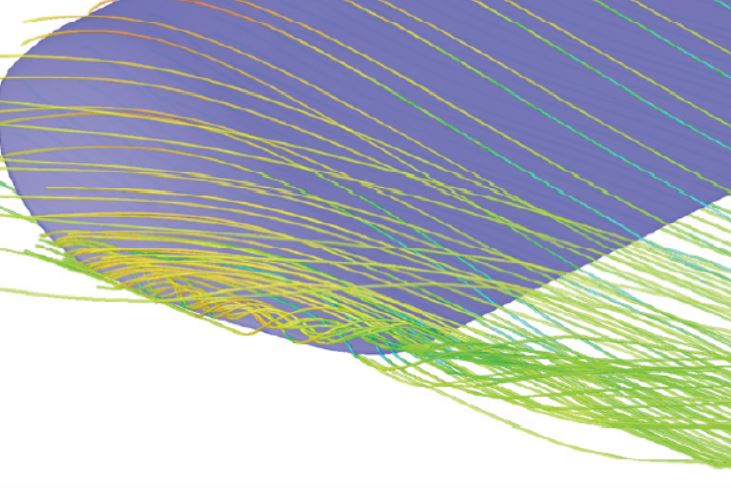
A two-equation turbulence model was used in this simulation.
Furthermore, the figures show the pressure distribution on the wing and the flow around the wing tip (represented by streamlines, colored with the velocity).
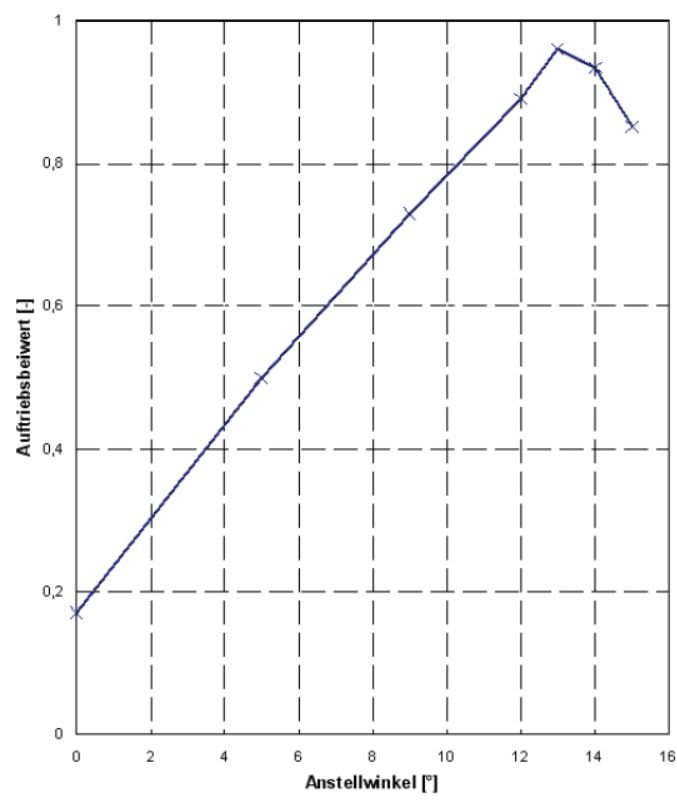
Of great interest was also the angle of attack at which the flow breaks off at the airfoil (stall). The reference sheet shows the flow conditions in a plane parallel to the flow at 13°, 14° and 15° angle of attack. The maximum lift coefficient is reached at 13° angle of attack, at 14° the flow is no longer at the upper side (suction side) of the wing.
